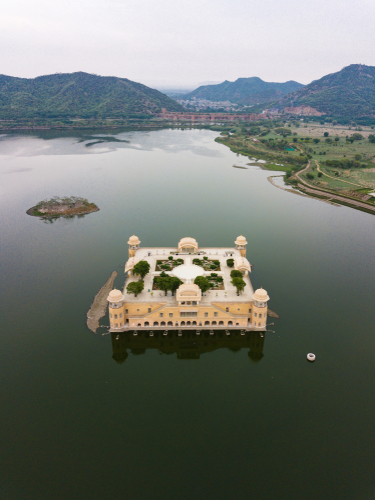The Indian government has announced (http://pib.nic.in/newsite/PrintRelease.aspx?relid=183093) that from 1 December this year visual line of sight drone operations will be allowed up to a height up to 400 feet. But operators will have to register their drones and commercial operators will have to complete a certified pilot’s course.
The full provisions of the government’s new drone policy can be found here: http://dgca.nic.in/cars/D3X-X1.pdf.
The government has launched an app, the Digital Sky Platform, which will provide electronic registry and permission-to-fly information for drone operators. According to the government statement:
“Instead of simply digitizing a paper-based process for registering and operating drones, India has formulated an all-digital process. The Digital Sky Platform is the first-of-its-kind national unmanned traffic management (UTM) platform that implements “no permission, no takeoff” (NPNT). Users will be required to do a one-time registration of their drones, pilots and owners. For every flight (exempted for the nano category), users will be required to ask for permission to fly on a mobile app and an automated process permits or denies the request instantly. To prevent unauthorized flights and to ensure public safety, any drone without a digital permit to fly will simply not be able to take-off. The UTM operates as a traffic regulator in the drone airspace and coordinates closely with the defense and civilian air traffic controllers (ATCs) to ensure that drones remain on the approved flight paths.”
The following entities will not require a permit to fly:
- Nano RPA operating below 50 feet (15 m) AGL in uncontrolled airspace / enclosed premises.
- Micro RPA operating below 200 feet (60 m) AGL in uncontrolled airspace / enclosed premises. However, the user shall intimate to local police office 24 hours prior to conduct of actual operations.
- RPA owned and operated by nominated government agencies.
Commercial drones will need to by type approved by the WPC Wing, Department of Telecommunication for operating in de-licensed frequency band(s). Civil RPA shall require Unique Identification Number (UIN) from DGCA.UIN.
The full operational provisions entail:
- All RPAS except nano and those owned by NTRO, ARC and Central Intelligence Agencies are to be registered and issued with Unique Identification Number (UIN).
- Unmanned Aircraft Operator Permit (UAOP) shall be required for RPA operators except for nano RPAS operating below 50 ft., micro RPAS operating below 200 ft., and those owned by NTRO, ARC and Central Intelligence Agencies.
- The mandatory equipment required for operation of RPAS except nano category are (a) GNSS (GPS), (b) Return-To-Home (RTH), (c) Anti-collision light, (d) ID-Plate, (e) Flight controller with flight data logging capability, and (f) RF ID and SIM/ No-Permission No Take off (NPNT).
- As of now, RPAS to operate within visual line of sight (VLoS), during day time only, and upto maximum400 ft. altitude.
- For flying in controlled Airspace, filing of flight plan and obtaining Air Defence Clearance (ADC) /Flight Information Centre (FIC) number shall be necessary.
- Minimum manufacturing standards and training requirements of Remote Pilots of small and above categories of RPAS have been specified in the regulation.
No Drone Zones: The regulation defines “No Drone Zones” around airports; near international border, Vijay Chowk in Delhi; State Secretariat Complex in State Capitals, strategic locations/vital and military installations; etc.
According to the government: “Drone Regulations 1.0 are intended to enable visual line-of-sight daytime-only and a maximum of 400 ft altitude operations. Air space has been partitioned into Red Zone (flying not permitted), Yellow Zone (controlled airspace), and Green Zone (automatic permission). Going forward, the Drone Task Force under the chairmanship of the Minister of State Shri Jayant Sinhawill provide draft recommendations for Drone Regulations 2.0. These regulations will examine, inter alia, the following issues:
- Certification of safe and controlled operation of drone hardware and software,
- Air space management through automated operations linked into overall airspace management framework,
- Beyond visual-line-of-sight operations,
- Contribution to establishing global standards,
- Suggestions for modifications of existing CARs and/or new CARs.”




